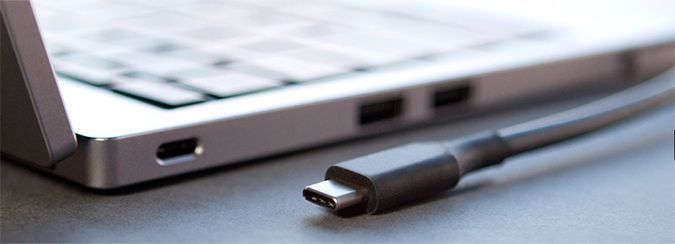 If USB Type-C, the newest USB standard, wasn’t confusing enough for the average person already, it will be now.
If USB Type-C, the newest USB standard, wasn’t confusing enough for the average person already, it will be now.
The USB 3.0 Promoter Group has announced USB 3.2, which should, in theory, double current top USB speeds to 20 gigabits per second. That is, if you have hardware that supports it, though you should be able to use your existing cable.
USB 3.1, the existing Type-C format, tops out at 10Gbps. USB 3.2 increases that speed by allowing multiple lanes of data transfer at the same time. While that 20Gbps number should be achievable, the USB Implementers Forum has yet to confirm that as the official speed. In short, that means that upcoming devices should be able to transfer data more quickly than current ones.
While faster speeds are great, USB 3.2 is still behind Thunderbolt 3, which can use the same reversible connector with speeds of 40Gbps.
Type-C is a reversible cable that is meant to charge all of your gadgets and even serve as a new audio jack, video output or charger. The one jack to rule them all is great in theory (we’re fans here at Laptop Mag), but in practice, roll-out has been rougher as users need dongles to use existing Type-A devices. Additionally, some cables have proven more reliable than others. This has made USB Type-C very confusing to some customers.
The USB 3.0 Promoter Group’s membership includes Microsoft, Intel, Apple, HP and Texas Instruments.
If you’re tired of waiting and waiting for your Windows 10 PC to boot, you’re going to want to make sure the Fast Startup setting is enabled. Also known as Fast Boot in Windows 8, this feature shuts your PC down similar to how it sets the machine to sleep, writing the state of your operating system to a hibernation file.

We tried this out on a PC we’re currently testing for review, and enabling Fast Startup reduced our boot time from 1 minute to 19 seconds, shaving 41 seconds — two-thirds of the boot time — off. Since changing this setting doesn’t take much time, why not take a moment now to save many in the future?
MORE: Our Favorite Tablets for Work and Play
Users who encrypt their have drive with software like TrueCrypt may not want to enable the setting, as they will then need to manually dismount encrypted drives prior to shutting down. Fast Startup also may lead to file corruption or other issues for computers that dual-boot between partitions or operating systems, so keep the setting disabled if you manage your computer in that manner.
This setting is commonly enabled in PCs sold running Windows 10 and any that were upgraded from Windows 8, but it’s more likely to be disabled on devices that were upgraded from Windows 7. Here are step-by-step instructions for how to turn on Fast Startup mode.
Contents
How to Cut Your Windows 10 PC’s Boot Time by 66 Percent
1. Click the Start button.
.png)
2. Type “Power Options.”
.png)
3. Select Power Options.
.png)
4. Click “Choose what the power button does.”
.png)
5. Select “Change settings that are currently unavailable” if the Shutdown settings are greyed out.
.png)
6. Check the box next to “Turn on fast startup.”
.png)
7. Click Save Changes.
![]()
Now your PC will take advantage of the Fast Startup mode when you boot it up.
-670x376.png)
Sometimes, no matter how much you turn up the settings, your touchpad (or other pointing device) just doesn’t cover enough ground in a single stroke. You shouldn’t have to lift up your finger, move it back to the other side of the pad and swipe again to make it across your desktop. And, If you have a laptop with a pointing stick such as a Lenovo ThinkPad, you really don’t want to have to push the stick really hard just to move around.
Fortunately, with a simple registry tweak, Windows 10 and previous versions provide a way to push your pointer speed and sensitivity higher than the control panel allows.
Before You Begin
Before you edit your registry, make sure your pointer speed is turned up to the maximum in your touchpad / pointing stick software or in the mouse control panel. To get there:
1. Navigate to the Windows Control Panel. You can get there by opening the Start menu and searching for “control panel.”

2. Open the mouse menu. If you don’t see the Mouse icon, set the “View by” menu to Large icons.

3. Open your touchpad driver (if there’s a link to it). It may have its own tab (ex: Dell Touchpad)

4. Set the pointer speed to max. You may have to set it separately for the touchpad and pointing stick.

5. Navigate to the pointer options tab in the Mouse Properties window.

6. Move the pointer speed slider all the way to the right and uncheck “Enhance pointer precision.”

7. Click OK.
Edit Your Registry for Maximum Pointer Speed
1. Open the Registry Editor. You can get there by hitting Windows + R, entering regedit in the box and hitting Enter.
2. Navigate to HKEY_CURRENT_USER\Control Panel\Mouse by opening the navigation tree in the left window pane.

3. Set the MouseSpeed to 2 by double-clicking on MouseSpeed and then entering 2 in the value field.

4. Set MouseThreshold1 to 0.

5. Set MouseThreshold2 to 0.

6. Close the registry editor and reboot your PC.
Windows 10 Performance and Productivity
More Tips
- Best Windows 10 Keyboard Shortcuts
- MIrror Your Screen to a TV or Monitor
- Speed Windows 10 Boot Time
- Get Superfast Mouse, Touchpad Speeds
- Calibrate Your Monitor
- Activate ‘God Mode’
- Defragment Your Hard Drive
- Copy and Paste at the Command Prompt
- Record Video of an App
- Use Offline Maps
- Get the Full Layout in Windows 10’s Touch Keyboard
- Create a .Reg File for Easy Registry Hacks
- Record PC Gameplay on the Xbox App
- Enable Swipe to Delete in Email
- Perform a Clean Install of Windows 10
- Uninstall Windows 10 and Roll Back to 7 or 8
- Enable the Linux Bash Shell
- Generate a Detailed Battery Report
- Turn a PC into a Wireless Display
- Open Folders in the Taskbar
- Open Sites in the Taskbar
- Import Gmail Contacts
- All Windows 10 Tips
[“Source-laptopmag”]










